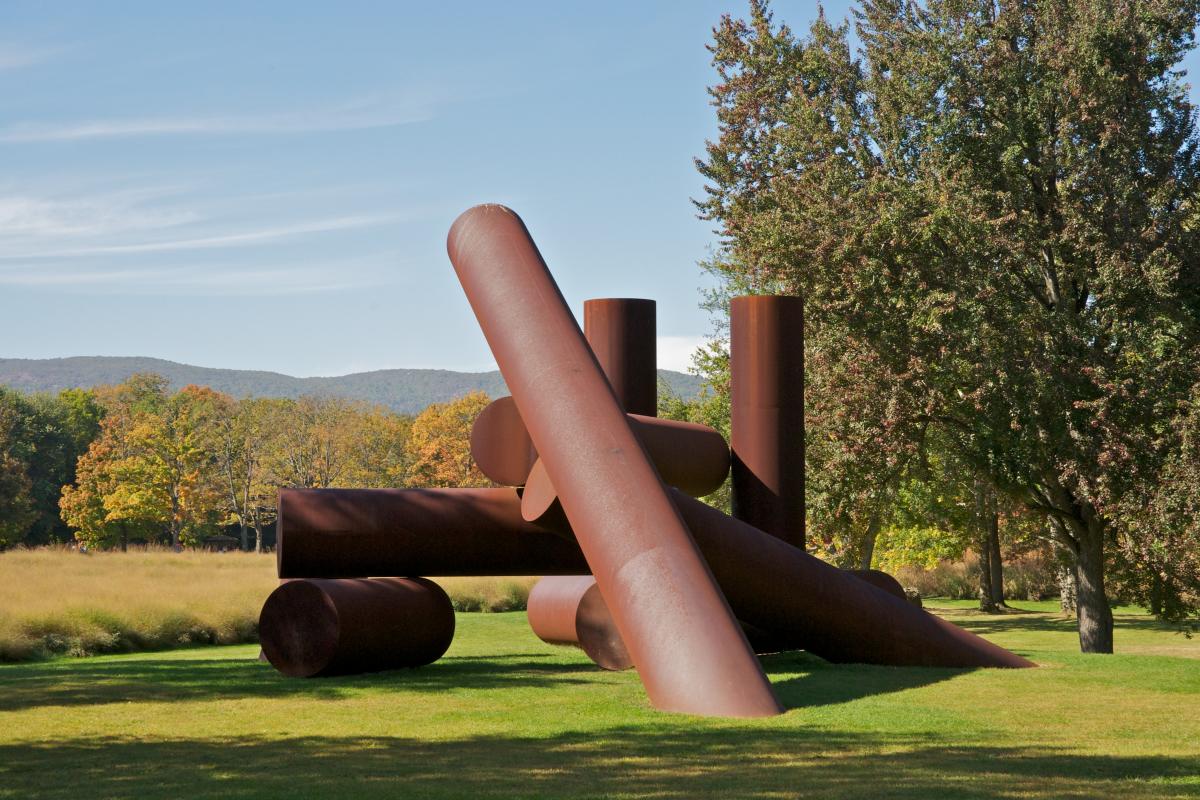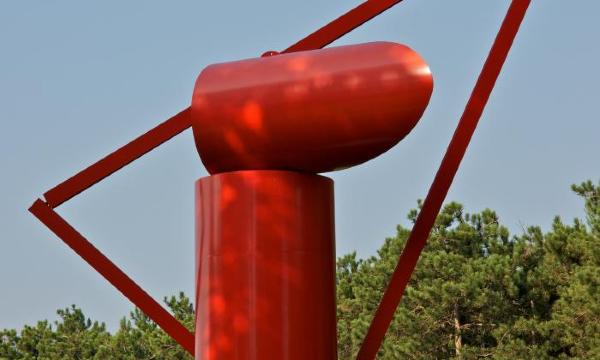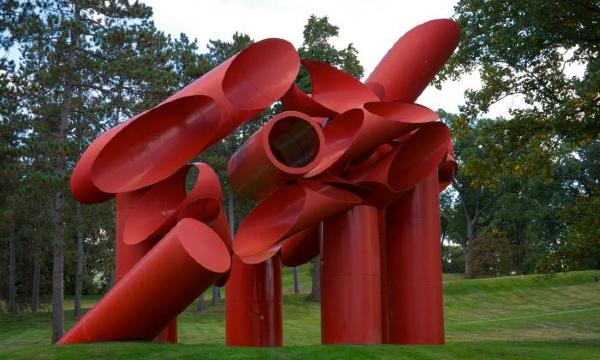On view

American, born Russia, 1912–1999
Adonai, 1970–71 (refabricated 2000)
Steel
29 ft. 6 in. x 63 ft. x 52 ft. 8 in. (899.2 cm x 19.2 m x 16.1 m)
Gift of the Ralph E. Ogden Foundation
© The Alexander Liberman Trust
Photo by Jerry L. Thompson
Alexander Liberman’s three large-scale sculptures at Storm King reflect his studies in architecture, painting, and photography, along with his exploration of readymade, industrial forms. They also recall his early childhood memories of stage sets from the Russian state children’s theater in Moscow—founded by his mother—and the towering forests he toured with his father, forestry minister under Vladimir Lenin. Throughout his life, Liberman sustained parallel commercial and artistic careers. In 1960 he had his first solo exhibition at Betty Parsons Gallery, New York. Two years later he was appointed editor-in-chief of all Condé Nast magazines, a position he held for more than thirty years.
Adonai was one of a few sculptures Liberman made using six-foot-long gas storage tanks. “I use cheap materials for economic reasons,” he noted. “But also, there’s an odd, maybe a romantic longing to contact the earth. I like rust. I like earth. I like rocks. The quality of a primitive forge anchors a modern mind to the earth.” Over time, the rusted steel tanks in Adonai physically deteriorated, and the massive sculpture was refabricated in 2000. While the work suggests a number of visual analogies, from fallen columns to trees, Liberman cited the renowned medieval cathedral at Chartres, France, as his inspiration. He observed that cathedrals start with a basic portal, followed by a nave (the main longitudinal space of a church). Evoking this architectural formula, the artist positioned two vertical cylinders as a portal and a single horizontal cylinder as a nave, stating, “You build your own imaginary cathedral.”
Liberman’s title for the work, Adonai, is the Hebrew word for “god.” Many of his sculptures, including Adam and Iliad at Storm King, bear similar biblical and mythical references. When asked about his interest in heroic titles, Liberman claimed that his close friend the Abstract Expressionist artist Barnett Newman had been influential in this regard, but that he had come to dislike titles. “They mean nothing to me,” he stated, “and today everybody wants titles. It’s like attaching a wooden handle to something that hopefully cannot be pinned down.”
Adonai was one of a few sculptures Liberman made using six-foot-long gas storage tanks. “I use cheap materials for economic reasons,” he noted. “But also, there’s an odd, maybe a romantic longing to contact the earth. I like rust. I like earth. I like rocks. The quality of a primitive forge anchors a modern mind to the earth.” Over time, the rusted steel tanks in Adonai physically deteriorated, and the massive sculpture was refabricated in 2000. While the work suggests a number of visual analogies, from fallen columns to trees, Liberman cited the renowned medieval cathedral at Chartres, France, as his inspiration. He observed that cathedrals start with a basic portal, followed by a nave (the main longitudinal space of a church). Evoking this architectural formula, the artist positioned two vertical cylinders as a portal and a single horizontal cylinder as a nave, stating, “You build your own imaginary cathedral.”
Liberman’s title for the work, Adonai, is the Hebrew word for “god.” Many of his sculptures, including Adam and Iliad at Storm King, bear similar biblical and mythical references. When asked about his interest in heroic titles, Liberman claimed that his close friend the Abstract Expressionist artist Barnett Newman had been influential in this regard, but that he had come to dislike titles. “They mean nothing to me,” he stated, “and today everybody wants titles. It’s like attaching a wooden handle to something that hopefully cannot be pinned down.”


